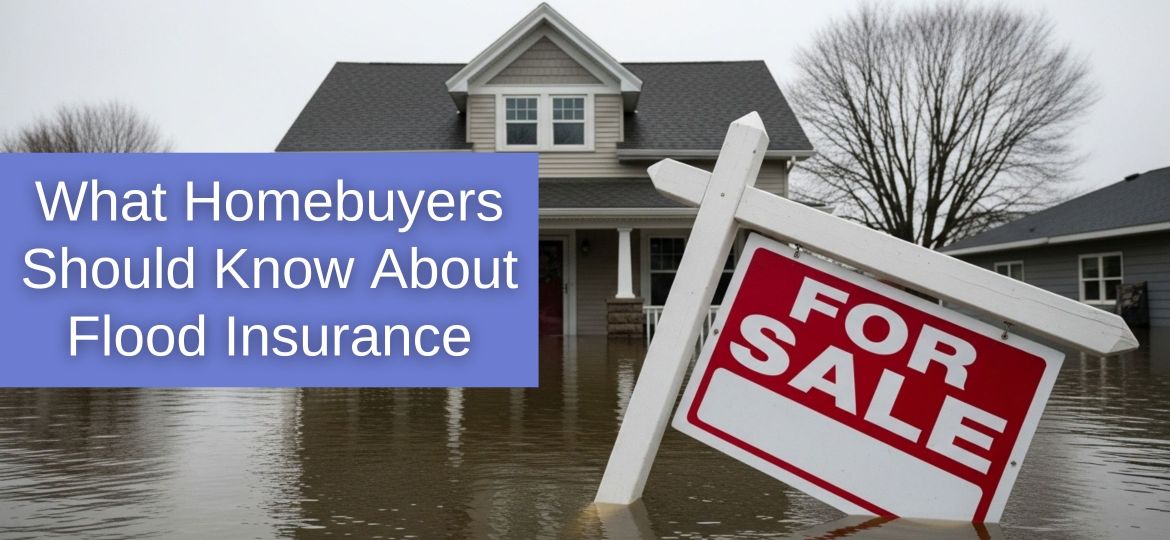
The excitement of buying a new home is palpable. You’ve found the perfect place, envisioned your future, and are ready to take the leap. But amidst the thrill, there’s a crucial detail that often gets overlooked: flood insurance. While your standard homeowners policy is essential, it’s vital to understand that it does not cover flood damage. For homebuyers in states like Louisiana and Mississippi, where flood risk is a significant and ongoing concern, understanding flood insurance isn’t just a good idea—it’s an absolute necessity.
This guide will walk you through everything you need to know about flood insurance before you close on your new home, ensuring you’re protected from the ground up. At Fassbender Insurance, we’re here to help you navigate these complexities and secure your investment.
Understanding Flood Risk: It’s Not Just for “Flood Zones”
When we talk about a “flood” for insurance purposes, we’re referring to a general and temporary condition where two or more acres of normally dry land, or two or more properties (one of which is yours), are inundated by water or mudflow. This can happen from overflowing rivers, tidal waters, or even unusual accumulation of surface waters from heavy rainfall.
To help assess risk, FEMA (Federal Emergency Management Agency) creates Flood Insurance Rate Maps (FIRMs). These maps divide areas into flood zones, like high-risk Special Flood Hazard Areas (SFHAs), often marked with letters like A or V, and moderate-to-low risk zones, typically designated as X. While these maps are crucial, it’s important to remember that any area can flood. In fact, nearly one-third of all National Flood Insurance Program (NFIP) claims come from properties outside high-risk zones.
In Louisiana and Mississippi, we’re no strangers to flooding. From historical events to recent hurricanes and severe thunderstorms, our region consistently faces the threat of rising waters. This makes a deep understanding of flood risk, and the proper insurance, an essential part of responsible homeownership here.
The Mortgage Connection: When Flood Insurance is Required
Your mortgage lender plays a significant role in determining your flood insurance needs. If the property you’re buying is in a Special Flood Hazard Area (SFHA) and you’re getting a federally regulated or insured mortgage (which includes most conventional, FHA, VA, and USDA loans), flood insurance is legally required. Your lender will perform a “flood determination” to confirm the property’s flood zone status. Even outside SFHAs, some lenders may still require it based on their own risk assessments.
Lenders typically require coverage for the full replacement cost of your home, the unpaid balance of your mortgage, or the maximum NFIP coverage, whichever is less.
A Critical Detail: Waiting Periods. Most flood insurance policies have a waiting period before coverage begins. For NFIP policies, this is usually 30 days from the purchase date. This means you can’t wait until a storm is imminent to buy coverage. While there are exceptions for new loan closings, it’s always best to arrange your flood policy well in advance of closing.
Your Flood Insurance Options: NFIP vs. Private
You generally have two main choices for flood insurance:
The National Flood Insurance Program (NFIP)
- Overview: Managed by FEMA, the NFIP is the primary source of flood insurance. Policies are issued through private insurance companies that partner with FEMA.
- Coverage: NFIP policies offer Building Coverage (up to $250,000 for the structure) and Contents Coverage (up to $100,000 for personal belongings).
- Standardization: Policies are generally standardized, with consistent terms and limits.
- Pros: Federally backed, widely available in participating communities.
- Cons: Coverage limits might not be enough for higher-value homes, and policies typically don’t cover additional living expenses (like hotel stays) if your home becomes uninhabitable. There’s also the standard 30-day waiting period.
Private Flood Insurance Market
- Overview: Offered by private insurance companies, these policies have become increasingly popular.
- Flexibility & Higher Limits: Private policies often provide higher coverage limits for both the dwelling and contents, and can include crucial additional living expenses.
- Broader Coverage: They may offer broader terms, potentially covering items or situations not addressed by NFIP.
- Pricing: Private rates are determined by individual insurers, which can sometimes lead to more competitive pricing, especially for certain properties or risk profiles.
- Waiting Periods: Often feature shorter waiting periods (e.g., 7-14 days) or no waiting period for new home purchases.
- Pros: Higher limits, customizable coverage, often includes living expenses, potentially more competitive rates, faster activation.
- Cons: Availability can vary, and while often competitive, rates might be higher in some very high-risk areas.
Factors Influencing Flood Insurance Costs
Your flood insurance premium isn’t a fixed cost. Several factors play a role in its determination, especially with FEMA’s “Risk Rating 2.0” framework, which personalizes rates more than ever:
- Flood Zone Designation: While Risk Rating 2.0 uses more variables, being in a high-risk flood zone still generally means higher premiums.
- Elevation of the Home: The elevation of your home’s lowest floor relative to the Base Flood Elevation (BFE) is critical. A higher elevation typically means lower risk and, thus, lower premiums. An Elevation Certificate (EC) can provide this vital data and potentially save you money.
- Age and Construction: Newer homes built to modern floodplain standards often qualify for lower rates due to their increased resilience.
- Deductible Chosen: Like other insurance, choosing a higher deductible will generally lower your annual premium, but means more out-of-pocket in a claim.
- Amount of Coverage: More coverage naturally leads to a higher premium.
- Flood Mitigation Efforts: Investments like elevating utilities, installing flood vents, or even elevating the entire structure can significantly reduce your risk and, consequently, your premiums.
- Location-Specific Costs: Given the high flood risk in Louisiana and Mississippi, flood insurance can be a significant part of your homeownership budget. While average NFIP costs are around $900-$1000 nationally, rates in our region can vary widely, reaching much higher in certain high-risk zones. A personalized quote is essential.

Steps to Take Before Closing
Being proactive about flood insurance will save you time and stress:
- Determine Your Home’s Flood Risk:
- Check FEMA’s Flood Map Service Center online with the property address.
- Ask your real estate agent.
- Your lender will perform a formal flood determination as part of your mortgage process.
- Discuss with Your Lender: Understand their specific requirements for flood insurance, including minimum coverage amounts and how the waiting period will affect your closing date.
- Obtain Quotes Early: Contact Fassbender Insurance as soon as you have a property under contract! We specialize in flood insurance for Louisiana and Mississippi. We’ll help you compare NFIP and private flood insurance options, explaining the nuances of each, and guide you on whether an Elevation Certificate could benefit you.
- Understand Your Policy: Don’t just look at the price. Know your coverage limits, deductibles, and any exclusions (e.g., loss of use, swimming pools, landscaping are generally not covered by flood insurance).
- Budget for Premiums: Factor the annual flood insurance premium into your overall homeownership costs to avoid any surprises after closing.
Why Choose Fassbender Insurance for Your Flood Insurance Needs?
When protecting your home, you need a partner who truly understands the local landscape and its unique challenges.
- Local Expertise: With offices in Slidell, LA, and Bay St. Louis, MS, we have deep roots in Louisiana and Mississippi. We understand the specific flood risks that impact our communities, offering relevant, tailored advice.
- Independent Broker Advantage: As an independent broker, we work with over 50 insurance carriers, including both NFIP and private flood insurance providers. This means we shop around for you, comparing options to find the best coverage at the most competitive price, ensuring you get unbiased recommendations.
- Personalized Service: You’re not just a policy number here. We pride ourselves on personalized guidance, answering your questions, and simplifying the complexities of flood insurance. We’re your advocate, every step of the way.
- One-Stop Shop: Beyond flood insurance, we can help you with your homeowners, auto, life, and commercial insurance needs, making us your comprehensive partner for protection.
Secure Your Investment, Protect Your Future
Buying a home is a dream come true, but it’s also a significant investment that deserves comprehensive protection. In our flood-prone region, flood insurance isn’t an option; it’s a critical component of responsible homeownership. It safeguards your financial future and ensures you can rebuild and recover should the unexpected happen.
Don’t wait until the last minute. Be proactive, understand your options, and secure your flood insurance early in the home-buying process.
Contact Fassbender Insurance today for a personalized flood insurance quote and expert guidance.


